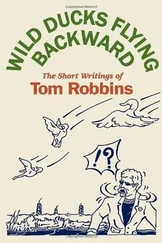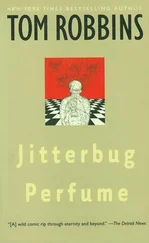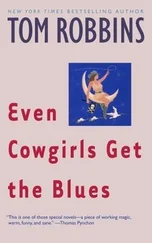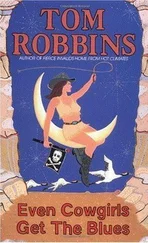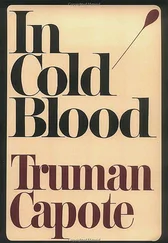The vast majority of underground films were short, seldom exceeding fifteen or twenty minutes. Andy Warhol’s movies were the exception — epic in length if minimalistic in content — so when it was announced that the premiere of Warhol’s latest effort would run a mere ninety minutes (his aptly named Sleep, the previous year, had run six hours), Cinematheqies took heart. Moreover, the subject of the new film, its “star,” was the erudite Henry Geldzahler, a highly influential museum curator and gadfly in the NY art world, and legion were those who courted his favor.
A nearly full house gathered to watch Henry Geldzahler, in which the curator was filmed sitting in an easy chair in what appeared to be a sunlit Hamptons beach house, smoking a cigar. And that was it. For an hour and a half. The camera was stationary throughout. There were no close-ups, no long shots, no fades or dissolves — and no sound track. Except for the arm that held the cigar, Geldzahler was motionless. After about thirty or forty minutes of this, I overheard grumbling. Several people seated near me got up and left. Reminding myself that in Zen it is said, “If something is boring for five minutes, try it for ten; if it’s boring for ten, try it for fifteen,” and so on, I was determined to stick it out. For this, I was rewarded.
In an otherwise static film, a couple of things were happening that held my attention. First, Geldzahler, as time went on, was growing obviously, genuinely uncomfortable. He neither spoke nor signaled, and made no move to rise, but his increasingly annoyed expression and rigid body language were those of a man who could barely wait for this experiment to end; and since this sentiment was shared by many, if not most, in the theater, it created in an odd, serendipitous way that sense of audience identification for which great actors and writers so often strive.
Then, there was the lengthening ash on the cigar. If puffed gently and undisturbed, a well-made, slow-burning cigar tends to hold its ash, and this fat stogie, doubtlessly of Cuban origin, burned on and on (on and on), its ash intact. As the ash grew longer, it became, for me at any rate, not just the focal point of the film but riveting.
Next to Geldzahler’s chair was a freestanding ashtray, the kind one used to see in hotel lobbies, and on several occasions later in the film Henry reached down and made as if to knock the ash off into the tray — only to pull the cigar back at the last second, and take another puff. Each time he did this, tension escalated. Gradually, the suspense became as great as anything in a Hollywood thriller. The fate of that long cigar ash — Would Henry ever flick it? Why didn’t it just fall off on its own? — was comparable to the fate of an imperiled Jimmy Stewart or Tippi Hedren in the most spellbinding Hitchcock masterpiece. I was breathing hard and, metaphorically at least, on the edge of my seat. And when at long last the ash could defy gravity no more, its tumble was cathartic, the release very nearly orgasmic.
The film ended. The houselights came up. And I was simultaneously flabbergasted and embarrassed to see that as near as I could tell there was not another soul in the theater! I alone had stuck it out.
Speed-walking for the exit at a pace that suggested the place was on fire, I was convinced that anyone who happened to see me would conclude one of the following: (1) I was the coolest, most Zen dude in town; (2) I was a poser, a phony out to prove that I alone possessed the sensitivity and intelligence to comprehend the meaning of such a challenging film; or (3) I was a naive sucker from the sticks whom the crafty Warhol had succeeded in duping.
On another first Thursday, a month or two later, I attended an opening at a major art gallery, where I chanced to meet a beautiful British film actress, young but already well known. I won’t identify her as she is alive and still acting, often appearing in TV miniseries from the UK as well as episodes of Masterpiece Theater. Our conversation was going so well that we elected to continue it elsewhere, and did so in the bar of her uptown hotel. After two or three drinks, she squeezed my hand, looked meaningfully into my eyes, and invited me up to her room. I glanced at my watch. Oh no! It was well past eleven and the Cinematheque film program would be starting at midnight. Stammering that I was duty bound to go watch some important underground movies, I kissed her on the cheek and fled to the New Yorker.
Now, my all-time favorite accolade from a book reviewer was when Fernanda Pivano, Italy’s best-known critic, wrote in a leading Italian newspaper that “Tom Robbins is the most dangerous writer in the world.” I never read my reviews, even in English, but others sometimes pass choice bits along, so when I had occasion to meet the legendary Signora Pivano at a reception in Milan, I asked her what she meant by that wonderfully flattering remark. She replied, “Because you are saying zat love is zee only thing that matters and everything else eese a beeg joke.” Well, being uncertain, frankly, that is what I’d been saying, I changed the subject and inquired about her recent public denial that she’d ever gone to bed with Ernest Hemingway, whom she’d shown around Italy in the thirties.
“Why didn’t you sleep with Hemingway?” I inquired.
Signora Pivano sighed, closed her large brown eyes, shook her gray head, and answered in slow, heavily accented English, “I was a fool.”
Okay, back to the New York Cinematheque. Why did I choose to go watch a bunch of jerky, esoteric, often self-indulgent 16mm movies rather than sleep with the sexy British actress? Move over, Fernanda, there’s room for two fools on your bus.
So many times and with such vigor did Eileen and I kiss during our months of cohabitation in New York that the sheer number of our kisses would have confounded Carl Sagan; while our osculatory energy, if converted to electricity, might have illuminated Times Square and half of Coney Island. Our mingling of mouth meat, Eileen’s and mine, was so persistent, so manifold that it’s impossible now to single out any of our individual smooches for special attention, which may account for the fact that the only kisses that do stand out, the only two I actually remember from that period, were brief, dry, and devoid of passion (and thus could not have involved Eileen). One was the previously described dumb, wimpy peck of rejection I planted on the cheek of that British actress. The other was bestowed on me by Allen Ginsberg, the only man who’s ever succeeded in kissing me on the lips.
It was a wintry day in 1965, and Ginsberg and I sported snowflakes in our hair and beards as we paraded in front of the Women’s Detention Center on West Tenth Street, Greenwich Village. The march, the first of its kind and none too large, had been organized by “Lemar” (Legalize Marijuana) to protest that the prison was crowded with females of all ages whose sole criminal act was the private, orderly, nonviolent inhalation of tiny plumes of smoke given off by a smoldering weed. From time to time, a girl would appear at a barred window to signal gratitude and encouragement before being ordered — or dragged — away.
Amidst the swirling snowflakes, like the orbs of mad polar bears, flashbulbs incessantly popped and glowed. Obviously, all those cameras weren’t being aimed by the media. Some in our group estimated that at least a half-dozen law enforcement agencies had representatives on the scene. Perhaps to inspire fear and promote intimidation, the various city, state, and federal agents made no effort to hide either their presence or their documentation, and I, for one, was growing increasingly nervous.
My anxiety must have shown in my expression, maybe in my body language as well, because at one point Ginsberg laid a gentle hand on my shoulder and said, “Don’t worry about it.” He recognized my callow face from Lemar meetings at the Peace Eye Bookstore, though at that time had not learned my name. “Don’t worry about it,” he repeated, nodding at our swarm of paparazzi. “In the long run, these fuzzy shots in some cop’s folder will do you more honor than your face on the cover of Newsweek or Time .” Then he kissed me lightly, exerting scant more pressure than a snowflake.
Читать дальше

